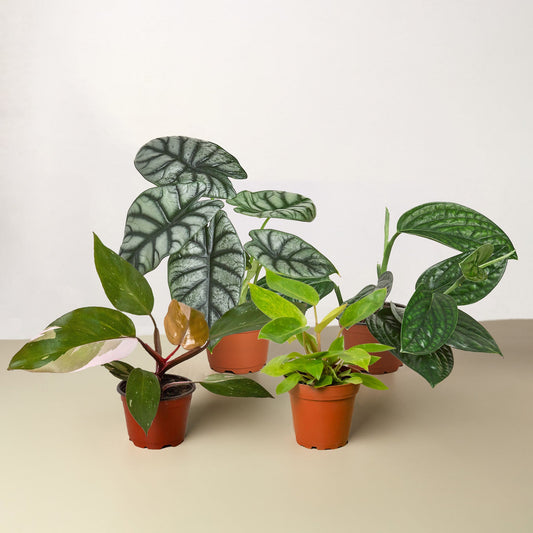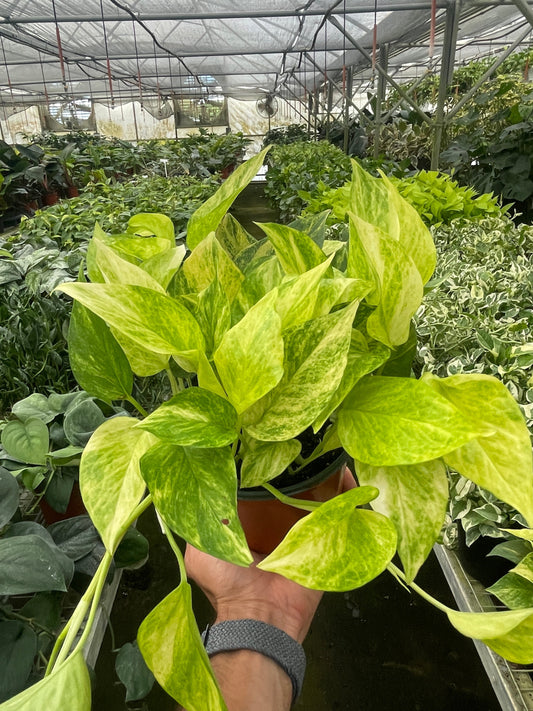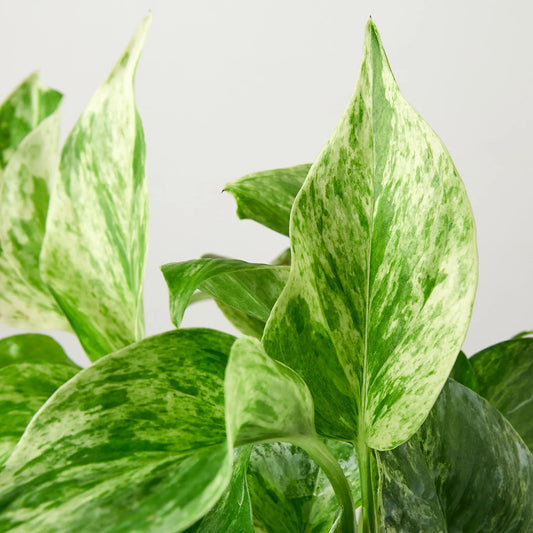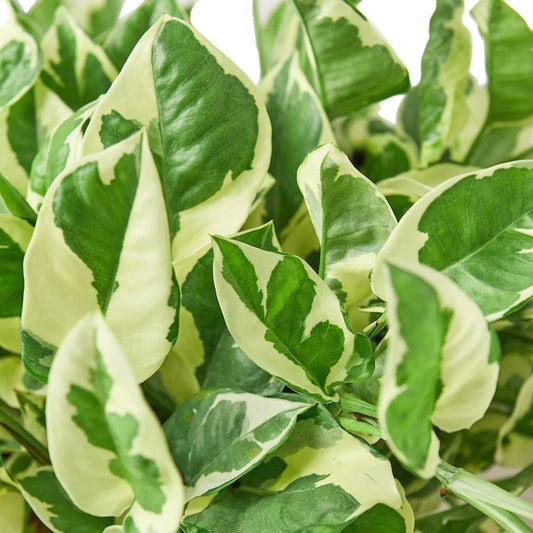Rex Begonia Aerial Roots: Everything You Need to Know
Cafe Planta Team
Rex Begonias are showstoppers in the world of houseplants. With their stunning foliage and vibrant colors, they can easily become the focal point of any room. But did you know these beauties sometimes develop aerial roots? These peculiar growths can cause a mix of confusion and curiosity among plant lovers.
In this article, we'll explore everything you need to know about Rex Begonia aerial roots. From understanding why they form to learning how to care for your plant when you spot them, we'll cover each aspect thoughtfully. So, whether you're a seasoned plant parent or just starting out, you're in the right place to learn about this fascinating feature.
What Are Aerial Roots?
Before we get too deep into Rex Begonias, let's start with the basics: what exactly are aerial roots? Simply put, these are roots that grow above the ground instead of below. Aerial roots are common in many plant species, including orchids, philodendrons, and, of course, certain types of begonias.
These roots serve several purposes. They can help the plant cling to surfaces, absorb moisture from the air, and even assist in photosynthesis. In the case of Rex Begonias, aerial roots might appear when the plant is attempting to stabilize itself or when it's searching for additional nutrients or moisture.
Interestingly enough, while aerial roots can look a bit unusual, they're generally not a cause for concern. Think of them as a plant's way of adapting to its environment. However, understanding why your Rex Begonia might develop these roots can be crucial in providing the best care possible.
Why Do Rex Begonias Develop Aerial Roots?
So, why do these charming plants sometimes decide to grow roots in unexpected places? There are a few reasons your Rex Begonia might start sprouting aerial roots, and understanding these can help you provide better care.
- Environmental Adaptation: In their natural habitat, Rex Begonias grow in humid, tropical areas. Aerial roots can help them adapt by absorbing moisture directly from the air.
- Stability: If the plant feels unstable, it might grow aerial roots to anchor itself. This is often more about 'feeling' than actual risk, as a pot-bound Rex Begonia is unlikely to topple without help.
- Nutrient Search: Aerial roots might also indicate that your plant is searching for additional nutrients. This could be a sign that it's time to reassess your fertilizing routine.
In most cases, aerial roots are just your Rex Begonia's way of saying, "I'm making the best of things here!" But they can also signal that your plant might need a bit of extra attention.
How to Care for Rex Begonia with Aerial Roots
Spotting aerial roots on your Rex Begonia can be a little surprising, but there's no need to panic. With the right care, your plant will continue to thrive. Here are some tips to help you along the way:
- Monitor Humidity: If your plant is developing aerial roots due to low humidity, try increasing the moisture in the air. You can use a humidifier or place a tray of water near your plant.
- Check Stability: Make sure your plant is stable in its pot. If it seems wobbly, consider repotting it into a slightly larger container with fresh soil.
- Evaluate Nutrient Levels: If you suspect a nutrient deficiency, consider fertilizing your plant. Use a balanced liquid fertilizer every couple of weeks during the growing season.
Remember, each Rex Begonia is unique. What works for one plant might not be perfect for another, so feel free to experiment a little to find what makes your plant happiest.
Should You Trim Aerial Roots?
One question that often pops up when discussing aerial roots is whether or not to trim them. The short answer is: it's usually not necessary. Aerial roots aren't harming your plant, and trimming them could potentially stress it out.
However, if the roots become unsightly or if they interfere with the plant's growth, it might be worth considering a little trim. If you do decide to cut them back, make sure to use clean, sharp scissors to avoid introducing any pathogens to the plant.
Ultimately, it's a personal choice. Some plant lovers embrace the wild, natural look of aerial roots, while others prefer a tidier appearance. Either way, your plant will likely continue to thrive with the right care.
Common Mistakes to Avoid
While caring for a Rex Begonia with aerial roots is generally straightforward, there are a few common mistakes you'll want to avoid:
- Ignoring Humidity Levels: As mentioned earlier, low humidity can lead to the development of aerial roots. Make sure to keep the air around your plant moist, especially during dry seasons.
- Over-fertilizing: While aerial roots might indicate a need for nutrients, be careful not to overdo it. Too much fertilizer can harm your plant and lead to other issues.
- Improper Trimming: If you choose to trim the aerial roots, ensure you're doing it correctly. Use clean tools and avoid cutting too close to the stem.
By steering clear of these pitfalls, you'll be well on your way to keeping your Rex Begonia happy and healthy.
Decorating with Rex Begonias
Rex Begonias are not just about their quirky roots; they're also about style and beauty. These plants can truly elevate the aesthetic of your home with their bold foliage and vibrant colors. But how do you incorporate them into your decor when they start growing aerial roots?
One idea is to embrace the natural look. Allow the aerial roots to add an element of intrigue to your plant's appearance. You can place your Rex Begonia on a plant stand or in a hanging basket where the roots can drape down, creating a whimsical effect.
Alternatively, if you prefer a more polished look, you might want to disguise the aerial roots. Consider placing decorative moss or stones around the base of your plant to cover the roots while adding a touch of style to your pot.
Remember, decorating with plants is all about expressing your personal style. Whether you choose to highlight the aerial roots or keep them hidden, your Rex Begonia is sure to be a conversation starter.
Propagation Possibilities
For those of you interested in propagation, aerial roots might just be your new best friends. While Rex Begonias are typically propagated through leaf or stem cuttings, aerial roots can sometimes increase your chances of success.
When taking a stem cutting, look for a section of the plant that has both a leaf and an aerial root. The presence of an aerial root can help the cutting establish itself more quickly once planted.
- Cut a Healthy Stem: Choose a stem that has a few leaves and, if possible, an aerial root. Use clean scissors for a precise cut.
- Prepare the Cutting: Remove any lower leaves from the stem, leaving a couple at the top.
- Plant the Cutting: Place the cutting in a small pot with fresh, well-draining soil. Keep the soil moist but not waterlogged.
With a little patience and care, you'll soon have a new Rex Begonia to add to your collection or gift to a fellow plant lover.
FAQs about Rex Begonia Aerial Roots
To wrap things up, let's tackle some common questions about Rex Begonia aerial roots. These are the inquiries we often hear from plant parents who are curious or concerned about this unique feature.
Are aerial roots a sign that something is wrong?
Not necessarily. Aerial roots are a natural adaptation and, in many cases, not a sign of trouble. However, if you notice other symptoms like wilting leaves or poor growth, it might be worth investigating further.
Can aerial roots develop in low-light conditions?
Yes, they can. While light conditions can affect plant growth in many ways, aerial roots are more commonly related to humidity and stability issues.
Will aerial roots affect the flowering of my Rex Begonia?
It's unlikely. Aerial roots don't typically interfere with flowering. As long as your plant is healthy and receiving proper care, it should bloom as expected.
These are just a few of the questions plant people often have about Rex Begonia aerial roots. If you have others, don't hesitate to reach out or do a little more digging into this fascinating topic.
Final Thoughts
Rex Begonia aerial roots are a curious and often misunderstood aspect of this stunning plant. By understanding why these roots form and how to care for them, you can ensure your plant continues to thrive.
At Cafe Planta, we're passionate about helping you care for your plants. Whether you're looking for plant care accessories or just some advice, we're here to help. Feel free to email us or reach out on Instagram. We believe in the power of plants to connect us to nature and each other, and we're excited to be part of your plant journey.



















